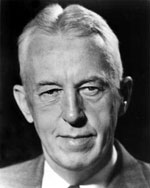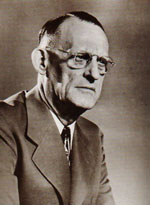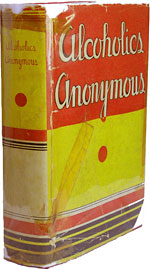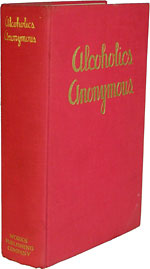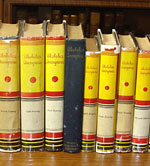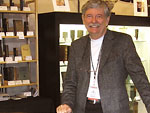One Day at a Time
A New York Stockbroker Got Sober—and Helped Shape a Rare Book Dealer’s Career By William Schaberg
This year marks the 70th anniversary of the publication of Alcoholics Anonymous, a book that continues to change lives by the millions. Because the first printing had wide margins and very thick paper, early readers nicknamed it “the Big Book.” The name stuck and is still used by AA members today. That is just one little fact I’ve learned over the past 20 years. I’ve grown to be something of an ‘expert’ on the Big Book—a title I’d never planned to acquire.
My antiquarian book business focuses on philosophy and science—the history of ideas—and mostly I sell what you might expect: first edition works by writers such as Descartes, Locke, Nietzsche, Darwin and Einstein. But in the early 1990s I happened to acquire a first edition copy of Alcoholics Anonymous, and not long after, a fellow bookseller offered me $3,000 for it. Who knew it was worth that kind of money? Obviously, not I.
I held onto the book and later sold it for almost twice that price.
After that I became especially attuned to offers of AA books and began to build a small side-business selling them, learning more about the book, its many printings, and its history as I went along. My research was frequently complicated by the discovery of contradictory statements of fact. The founding participants in AA had proven to have dreadful memories about dates and other details. Totally frustrated by the lack of convincing information in the public record, I finally requested and was granted, permission to do some research at the AA Archives in New York City. What I found was a compelling history filled with fits and starts, loud arguments and extensive edits—a truly fascinating story that is worthy of a book-length treatment. And my research goes some way toward explaining why the fully annotated “master copy” of Alcoholics Anonymous sold at Sotheby’s for $1,576,000 in 2004.
The story begins in December 1934 with Bill W. (last names are never used in AA), a drunken New York stock broker who finally got sober and embarked upon a mission to save other alcoholics in the New York City area. These attempts were unsuccessful until six months later, Bill traveled to Akron, Ohio on business. While there, he found himself pacing up and down a hotel lobby, trying to choose between a drink in the bar and making a phone call for help. Bill finally decided to pick up the phone and, because of that call, he met Dr. Bob, a local proctologist who couldn’t stop drinking no matter how hard he tried. Magic struck. Dr. Bob got sober and the two men began visiting local hospitals, looking for other alcoholics in need of help.
Two and half years later, they met and did a head count for the Akron and New York groups and realized that there were 40 sober members. This was encouraging, but 40 members were nothing compared to the vast number of alcoholics in the country! The big question was: How could they effectively bring their message of hope and recovery to more people? Things were going much too slowly for Bill, who was an ambitious promoter and a salesman of the first order. He wanted the Ohio group’s approval for him to go back to New York and raise money so that they could establish a chain of hospitals, pay regular salaries to a band of traveling “missionaries,” and write a book that would explain the program of recovery, thereby carrying the message out into the world. By the thinnest of margins, the Akron group voted to support the fundraising for these three initiatives.









